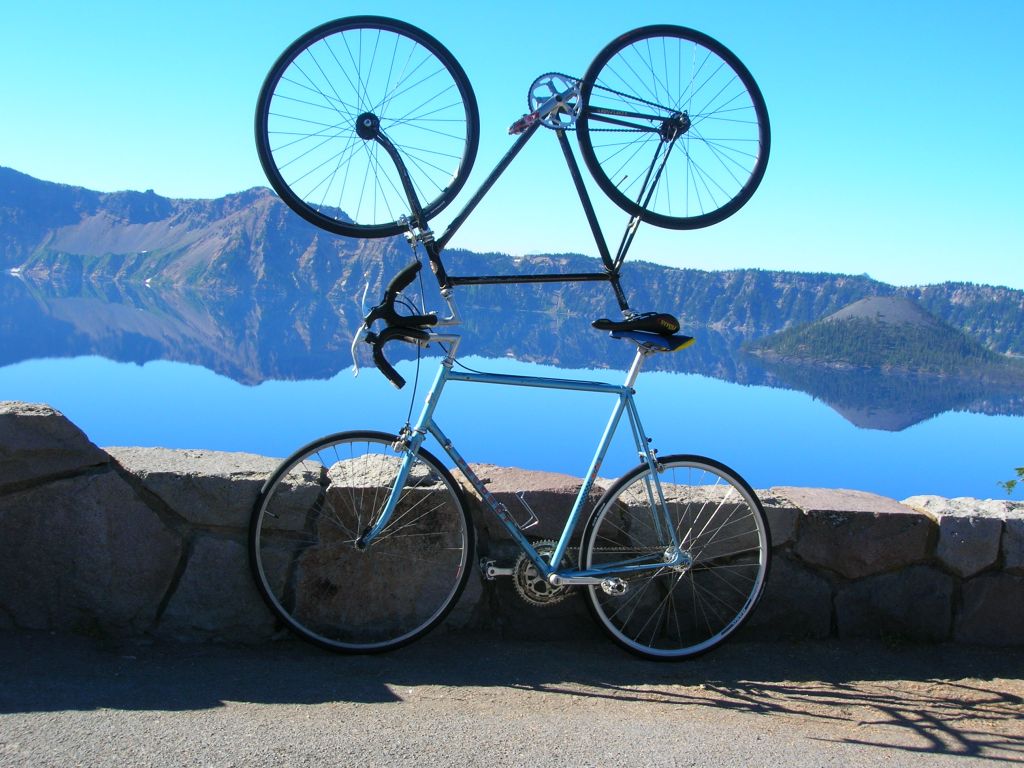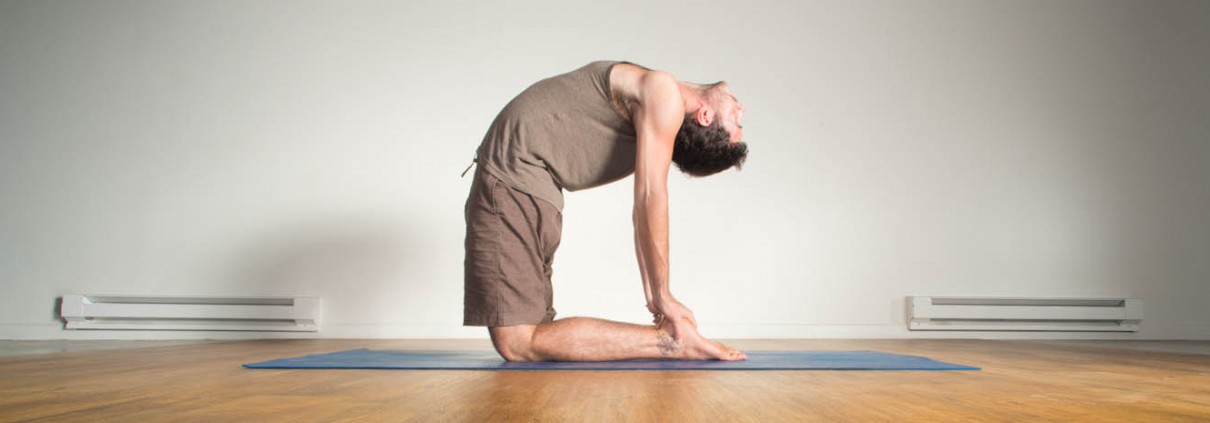Fixed Gear Riding
Since my last post about biking in a city, a lot of people have asked me why I ride a fixed gear bicycle. Isn’t it more dangerous? Doesn’t it make hills miserable? What’s the deal? Are you a hipster? I’ve been riding mostly fixed gear for about four years (with the exception of bike touring in Italy), and I love it.
You only get to choose one gear ratio for a fixed gear bike, and it’s an important choice. A lot of people aim for a ratio of close to 2 for city riding (twice as many teeth on the chain ring by your feet as on the back wheel hub). This makes going up hills and stopping with just your feet a bit easier, but it means your feet really spin when you’re going fast. I opted for a gear ratio closer to 3, which lets me build up a little bit more speed. It makes some hills devastating, and it means I use my hand brake more often to control my speed. For longer rides, it’s key for getting through long flat stretches.
Anyway, here are the top five reasons I ride a fixie:
1. Control
Riding a fixie gives one a whole different sense of control of the bicycle. The difference between fixed and free wheels is that the fixed wheel has no ratcheting mechanism in the back hub. When you crank the pedals, the back wheel spins proportionally to your pedal stroke. If you pedal slower, the wheel spins slower. If your feet are stationary, the wheel is stopped. You can even pedal backwards if you’re good. With a free wheel, when you stop pedaling, you coast as far as your momentum will take you. The direct control over the back wheel means you can make minor adjustments to your velocity without braking, and you can come to a complete stop relatively quickly without brakes. Maybe I am a control freak? Some riders remove brakes from their bikes completely, but this is a pretty bad idea in general. It works if you live in a kind of flat place, or if you have a poor sense of self-preservation and live somewhere like San Francisco. It basically necessitates using skid stops, which is when you crank hard on the pedals to stop the back wheel despite your forward momentum, causing your back wheel to lock up and skid to a stop.
2. Simplicity
There are two primary forms of simplicity in the fixed gear: simplicity in mechanics, and simplicity in riding. The mechanics are easy to figure out and easy to tune up. It is a bicycle stripped down to its most essential. No derailleurs, and so no alignment issues, very few chain issues, and no shifting cables to worry about. I built my bike up with a friend in Eugene, which was a great way to see how the whole thing works. If you keep it clean and tightened, this bike will stay solid. In terms of riding, you always have one less thing to think about. You never have to worry about gear selection. When you come to a hill, you have to pedal harder. You don’t have to think about what gear ratio is going to get you up the hill with the least amount of effort, and you don’t have to click around through your gears to find it. This may seem like a small thing, but I enjoy the simplicity in it.
3. Momentum
When you ride a free wheel bike (one that can coast), there is a dead spot at the top of your pedal stroke. It’s the spot when your foot is at the top of the stroke when you’re transitioning between pulling up and pushing down. With a fixie, your momentum keeps the pedals moving, so you actually get a little push from the bike instead of having a dead spot. The bike always wants to keep moving. It is responsive to your adjustments and provides feedback on how it’s moving directly to your feet. As an added bonus, the fixed gear ratio allows you to calculate statistics about your ride on the fly. One time I went on a 135 mile ride with a friend from Eugene to the ocean and back. On the way, I figured out that the whole ride would entail 34,000 pedal strokes (I was a little bit off because I simplified pi).
4. Exercise
Riding a fixie is better exercise than a regular geared bike. To slow down, you have to resist the pedals turning, so you get resistive force on your legs in addition to explosive. Because I don’t get to gear down for hills, I generally end up riding harder up them. I know if I lose too much momentum I won’t be able to get it back without some serious effort. On the way down the hill, I end up going slower because I have to pedal the whole way. This requires some resistive force to keep from losing control, which makes it a great workout no matter the terrain.
5. Silence
This bike is quiet. Free wheels click as they spin, but a fixed wheel doesn’t have any ratcheting parts, so it is completely silent. Well, at least when it’s well oiled and aligned. My bike has been having some other unhappy sounding clicks and scratches, but that’s just because it’s desperate for a tune up right now. There is something wonderful about sailing down a road, fully engaged with the ground, not making a sound.
Riding a fixie may not be for everyone, but I really enjoy it. If you’ve got some time to burn, check out some Youtube videos of people doing tricks on their fixies. Really impressive, and really crazy. In order to move one step closer to being able to join the circus, I’ve been practicing my no-handed track stands. Once I’m able to play ukulele while I balance on my bike, I think I’ll have a chance.


